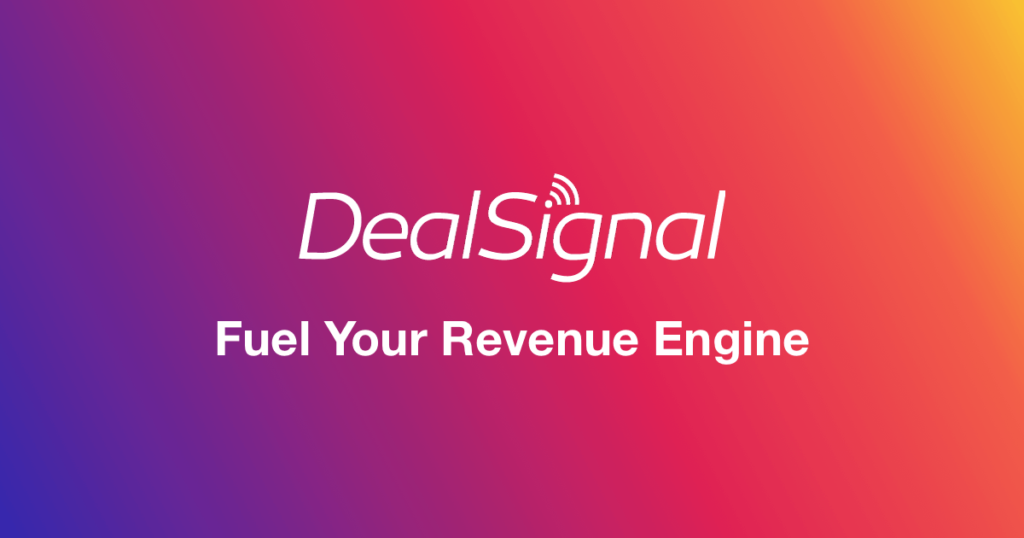How much information do you have on every prospect in your database? What about your targeted accounts? Do you have enough data to effectively analyze, strategize, and prioritize your prospects, leads, and sales and marketing activities?
In today’s age of personalization, segmentation, and automation, you need rich data to target your prospects effectively. But you can’t rely on website forms or event attendee lists to tell you everything you need to know to move leads down the funnel and convert them. That’s where data enrichment comes in.
Defining data enrichment
B2B data enrichment is the process of augmenting B2B contact data with additional details, at the contact, account, or company level. Sometimes referred to as data appending, data enrichment can be performed manually or with the help of a data enrichment service.
Data enrichment activities fall into two categories: lead enrichment and account enrichment.
Benefits of data enrichment – why it’s important for B2B
Enriched data improves your decision-making, collaboration, and tactical execution. Even if you have a large list of companies to target, or a high number of leads in your database, it’s hard to truly maximize your efforts if you don’t have enough information about them. With the budget and resources pressures caused by the pandemic, having enriched data can prevent you from spinning your wheels on tactics and prospects that won’t gain any traction.
Complete the data you get from varying lead sources
Think about all of the sources that generate leads. Forms on your website. Third-party webinars. Events. Salespeople saving contacts, ad hoc, to your CRM. The amount of data you gather on each lead from those sources varies. In the case of third-party sources, such as event lists and webinars, you have little control over how much data you get. And there’s no way to acquire all the same data points on every new lead and prospect.
Data enrichment is the great equalizer. It fills in missing fields so you can make judgements with a complete data set. With effective data enrichment, you can assess all of your leads equally, regardless of where they originated.
Automatically enrich your inbound leads
Level the playing field between sales and marketing
Data enrichment also levels the playing field between sales and marketing. Without an accurate, complete database, it’s common for salespeople to make their own “shadow” CRM, where they collect the data that matters to them, often from more widespread and less credible sources. This means that marketing and sales are engaging leads and prospects with two different sets of data. That throws off your scoring, negatively impacts your segmentation, can lead to duplicate outreach, and muddies the relationship between the two departments that should work hand-in-hand. When sales and marketing are misaligned on technology, it costs the company 10% in revenue per year.
Speaking of sales and marketing alignment, enriching your data makes the lead hand-off process smoother. It gives you the data you need to properly assign the lead, prioritize it, and provide a personalized experience. The more seamlessly a lead moves through the funnel on your side, the better the experience is for your potential customers.
Improve lead qualification with richer data
Data enrichment gives you the information you need to qualify, segment, prioritize, and properly assign inbound leads. With time being of the essence right now, having reliable automations in place for lead hand-offs, segmenting, etc. saves you valuable time. How do you know when a lead is ready to be sent to sales? Their behaviors may paint part of the picture, but data enrichment will tell you whether they’re your ideal prospect, and the ideal buyer within their organization. Now’s not the time to waste energy on leads who display all the right behaviors but don’t have any of the right attributes.
Shorten your lead forms
Marketers have long struggled with how long to make their lead forms. If your form is too short, you don’t get to capture key information on your leads. If it’s too long, people won’t want to fill it out. Progressive profiling can help you accumulate key information on your leads while maintaining short lead forms. But that means you need leads to complete multiple forms. That approach may not align with the experience you want leads to have as they move through your funnel.
Lead enrichment allows you to gather the data you need to properly score and route a lead without trying to squeeze all that information into one form. Some data enrichment companies offer tools that automatically complete form fields for you. The key is to work with a vendor who has access to the most updated, accurate data.
Data cleansing
Data enrichment tools can also be used to clean up your CRM database. Under normal circumstances, it’s good to periodically cleanse your database of leads that are no longer valid. With COVID-19 turning the economy upside down, data cleansing has become vital to making the most of your time and reducing the costs of maintaining out-of-date records.
By enriching data, you can identify which leads are still in important roles, narrow down your target list to those who fit your ideal buyer profile, and archive any prospects or companies that are no longer worth your time.
For instance, many companies have shifted from brick-and-mortar stores to e-commerce only. If you sell lighting installation services, those companies are no longer in your target market. You can only surface this level of data with flexible, extensive account enrichment.
Inbound lead enrichment and contact data enrichment
Once you have a solid number of leads coming in every month, you need to figure out how to prioritize, score, and route those leads. For example, if you target large, multinational corporations, then you need to know which region your leads actually work for. That may not be easily determined by their address alone.
Let’s say you get a lead who works for Verizon out of one of their corporate offices on the west coast of the US. You may assume that they work for Verizon’s North American division, but they may actually work for its Asian-Pacific division. If you send that lead content about North American consumers, they’ll likely be turned off. Lead enrichment helps you avoid that mistake.
Lead enrichment use cases
Segmenting for marketing nurtures: Over the lifecycle of a lead, you need to engage them multiple times, across numerous channels. With limited opportunities to make an impression, making a misstep can be costly. We all remember when we receive emails that are poorly targeted, whether the sender used the wrong first name or referenced the wrong job title. Accurate lead enrichment prevents you from being one of those senders, and instead being a personalization pro driving that 10 to 15 percent revenue lift accurate messaging gives you.
Segment for the right events: Event marketing is one of the most important B2B marketing channels today. It nurtures brand awareness, deepens business relationships and accelerates opportunities – and 95% of marketers know the power they hold. However, there’s no point in inviting leads to events they can’t attend. If you rely on events (both digital and traditional) to engage your leads, you need to know their region and time zone. And if your events feature content targeted to specific roles, then you need your leads’ titles so you invite the right people.
Follow up on leads on an ongoing basis: Once a lead has been captured and handed over to sales, enriched data helps them prioritize, score, and route those leads effectively. Augmenting lead data with their location, title, and other key attributes helps sales reach those leads and have more meaningful conversations with them.
Not keeping tabs on your leads can have quite an impact on your sales at the end of the day – according to LinkedIn’s 2022 State of Sales Report, 86% of sales professionals have had deals lost or stalled in the past 12 months due to a key stakeholder leaving a client or prospect company.
Account enrichment
Account enrichment is the process of appending data at the contact level. That can include firmographics, technographics, geographic data, employee counts, or financial information – anything that helps you develop a more solid understanding of the companies you’re targeting.
While lead enrichment is helpful for companies that are already generating leads, account enrichment works for both new and established organizations.
Account enrichment use cases
Determining your go-to-market strategy: If your company is in its early stages, you don’t necessarily have much information on individual prospects. If you’re just in the beginning phases of developing your go-to-market strategy, what you need is insight into the companies that you need to target.
Have you created your buyer persona profiles? What are some essential qualities you’re looking for in your leads?
Account enrichment helps you determine your go-to-market strategy, define market prioritization, and identify your audience(s). It’s also a helpful tool for sales assignment and territory planning a quality go-to-market strategy means very little without the necessary information to drive its later execution.
Lead scoring, routing, and assignment: Even if you’re already enriching leads, you need account enrichment to complete the full profile of each lead. They may have the right title and the right behaviors, but you need to know if their company is a good fit for your business. Account enrichment helps you make that determination.
And once your priority leads show signs of serious buyer’s intent, your response time is of the essence. Research has shown that the first 5 minutes after receiving a hot lead are crucial for conversion – is your sales department equipped enough to route their leads that efficiently? With account enrichment, lead routing can be automated and the right sales team or person can be assigned the right prospect – categorized by geographical location, company size, industry, etc.
How to avoid poor lead enrichment providers
All of the use cases and benefits we’ve discussed so far are only possible with accurate, complete enrichment data. That means you need to avoid data enrichment providers who can’t deliver what they promise. Ideally, your data enrichment provider will offer a 90-100% match rate. If not, performance will suffer because you’re left with a large chunk of leads that you can’t nurture, follow up on and convert, despite your investment in data enrichment.
Another issue you’ll find with bad data providers is blank data. They match leads, but key fields are empty. If you’ve hinged your lead scoring and routing on those variables, and they’re empty, then your scoring and routing systems break down.
When seeking out data enrichment tools, many companies choose to plug into one of the more well-respected databases to enrich their hottest leads quickly. The problem here comes when their database of choice relies on static data. Static data, which doesn’t change after it’s been sourced, can easily become outdated.
Instead, we recommend that you take the time to enrich the lead using a dynamic data source and follow up when you have accurate information to work with. Unlike static data sources, dynamic data is constantly updated to reflect the most accurate information available. So when a prospect gets a new title or moves to a new location, the data is updated as soon as that information is made available.
Work smarter with enriched data
With a limited budget and resources, you need every tool you can to maintain a lean, effective operation. You may be starting with a good foundation of data, but without enrichment, the quality of that data is probably inconsistent, and it will decay.
Acting with precision is critical right now, and relying on inconsistent data puts you at a disadvantage. By leveraging data enrichment, you can spend more of your time on the prospects, leads, and accounts that are most likely to generate revenue.
eBook: The Definitive Guide to Evaluating & Choosing a B2B Data Provider
Get a better understanding of the differences between B2B data providers and which performance factors really matter.
Learn more about B2B data
- B2B Marketing Trends to Master in 2024
- The Best Lead Enrichment Tools for 2024
- Accuracy Matters: Why You Should Look Into ZoomInfo Alternatives
- Data Accuracy & Coverage: Why DealSignal is the #1 Zoominfo Competitor
- How to Evaluate B2B Data Providers and Find the Best Fit
- How B2B Data Quality Impacts Email Deliverability
- Account-Based Marketing Strategies: 7 Tactics to Improve Campaign Performance
- How Great B2B Data Helps Sales & Marketing Teams Improve Productivity, Performance, and Revenue





